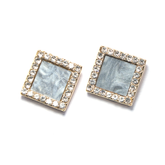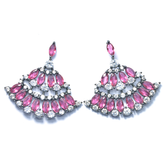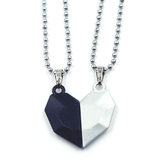Beyond Sparkle: Exploring Cultural Significance in Jewellery Design
Jewellery has always been more than just adornment. It carries stories, traditions, and cultural significance that transcend time and geography. While the sparkle of gems and precious metals may catch the eye, delving deeper reveals a rich tapestry of history, symbolism, and craftsmanship woven into each piece. In this exploration, we'll journey beyond the surface glitter to uncover the cultural depths of Jewellery design.
The Cultural Mosaic of Jewellery:
Ancient Roots:
From ancient civilizations to modern-day societies, Jewellery has been an integral part of human culture. The earliest known Jewellery dates back tens of thousands of years, crafted from materials such as shells, bone, and stone. These artifacts not only adorned the body but also served as symbols of status, spirituality, and identity within their respective cultures.

Ancient Egypt, with its opulent burial practices, left behind a treasure trove of Jewellery, much of it adorned with scarab beetles—a symbol of rebirth and protection. In Ancient Greece, laurel wreaths were fashioned into crowns, bracelets, and necklaces, symbolizing victory and honor. Meanwhile, in Ancient China, jade ornaments were highly prized, representing virtue, grace, and longevity. In Mesoamerican cultures, turquoise mosaics adorned ceremonial objects, believed to bring protection and divine favour.

|
Civilization |
Jewellery Style |
Significance |
|
Ancient Egypt |
Scarab Beetles |
Symbol of rebirth and protection |
|
Ancient Greece |
Laurel Wreaths |
Associated with victory and honor |
|
Ancient China |
Jade Ornaments |
Represented virtue, grace, and longevity |
|
Mesoamerican |
Turquoise Mosaics |
Sacred stone believed to bring protection |
Cultural Symbols:
Throughout history, Jewellery has been used to communicate cultural beliefs, values, and affiliations. Symbols embedded in Jewellery designs often carry profound meanings, reflecting the beliefs and practices of diverse communities around the world.
The lotus flower, for instance, holds deep spiritual significance in various cultures, symbolizing purity and enlightenment. Hamsa hand motifs, found in Middle Eastern and North African Jewellery, are believed to offer protection and blessings. Celtic knots, originating from ancient Celtic culture, represent eternity and connection. The Om symbol, sacred in Hinduism and Buddhism, embodies spiritual harmony and the essence of the universe.
|
Symbol |
Cultural Association |
Jewellery Example |
|
Lotus Flower |
Purity, Enlightenment |
Lotus Pendant |
|
Hamsa Hand |
Protection, Blessing |
Hamsa Bracelet |
|
Celtic Knot |
Eternity, Connection |
Celtic Knot Ring |
|
Om Symbol |
Spiritual Harmony |
Om Necklace |

Traditional Craftsmanship:
The art of Jewellery-making is deeply rooted in traditional craftsmanship techniques passed down through generations. Across cultures, artisans employ various methods such as casting, engraving, and filigree to create intricate pieces that showcase their cultural heritage and expertise.
|
Craftsmanship Technique |
Cultural Origin |
Notable Example |
|
Cloisonné |
Chinese |
Cloisonné Earrings |
|
Filigree |
Spanish |
Filigree Bracelet |
|
Millefiori |
Italian |
Millefiori Glass Pendant |
|
Zardozi |
Indian |
Zardozi Embroidered Necklace |

Contemporary Trends:
In the modern era, Jewellery design continues to evolve while maintaining a strong connection to cultural roots. Contemporary designers often draw inspiration from traditional motifs, materials, and techniques, infusing them with a contemporary twist to create pieces that resonate with today's global audience.
Tribal revival has emerged as a popular trend, with designers incorporating indigenous art and symbols into their creations. Fusion fashion celebrates cross-cultural blending, juxtaposing elements from different traditions to create unique and eclectic pieces. Heritage reimagined takes a fresh approach to traditional designs, breathing new life into age-old motifs. Eco-friendly Jewellery, crafted from sustainable materials and using ethical practices, reflects a growing consciousness about environmental and social issues.
|
Trend |
Cultural Influence |
Example |
|
Tribal Revival |
Indigenous Art and Symbols |
Tribal-Inspired Necklace |
|
Fusion Fashion |
Cross-Cultural Blending |
Fusion Earrings |
|
Heritage Reimagined |
Reinterpretation of Traditional Designs |
Modernized Heirloom Ring |
|
Eco-Friendly |
Sustainable Materials and Practices |
Recycled Gold Bracelet |

Final Words:
Jewellery design stands as an evocative testament to the rich tapestry of human history, echoing the shared narratives woven through the ages. Its significance transcends mere adornment, serving as a profound reflection of our interconnected past, present, and future. Delving deeper into this intricate realm reveals a myriad of facets, each reflecting the unique cultural expressions, beliefs, and traditions of diverse societies.
- Cultural Heritage Preservation: At its core, Jewellery design encapsulates the essence of cultural heritage, preserving ancient symbols, motifs, and techniques passed down through generations. Each piece serves as a tangible artifact, offering a glimpse into the customs and rituals of civilizations long past. Whether it's the intricate filigree of Byzantine Jewellery or the symbolic motifs of Indigenous tribes, these artifacts serve as a bridge connecting us to our ancestral roots.
- Symbolism and Meaning: Beyond its ornamental value, Jewellery carries profound symbolism, imbued with layers of meaning that transcend linguistic barriers. From the protective amulets of ancient Egypt to the matrimonial bands exchanged in contemporary weddings, each piece speaks volumes about the values, aspirations, and social norms of its time and place. Through intricate craftsmanship and thoughtful design, artisans embed narratives of love, faith, and resilience into every jewel, perpetuating traditions and forging connections across cultures.
- Innovation and Adaptation: While rooted in tradition, Jewellery design also reflects the dynamic evolution of human creativity and ingenuity. Across the centuries, artisans have continually pushed the boundaries of their craft, experimenting with new materials, techniques, and aesthetics. From the exquisite filigree of Renaissance Jewellery to the sleek minimalism of modernist designs, innovation remains a driving force, ensuring that the art of Jewellery remains relevant and vibrant in an ever-changing world.
- Global Exchange and Influence: The world of Jewellery is a melting pot of diverse influences, shaped by centuries of cross-cultural exchange and collaboration. Trade routes crossing continents have facilitated the diffusion of styles, motifs, and craftsmanship techniques, resulting in a rich tapestry of hybrid designs that transcend geographical boundaries. Whether it's the incorporation of Chinese jade in Mughal ornaments or the fusion of African beadwork with European metalwork, these intercultural encounters enrich the fabric of Jewellery design, celebrating the beauty of diversity and fostering mutual understanding.
In conclusion, Jewellery design serves as a multifaceted prism through which we can explore the depth and diversity of human experience. It is a testament to our shared heritage, a repository of cultural memory, and a canvas for artistic expression. As we continue to navigate the complexities of the modern world, let us cherish the stories woven into each jewel, embracing the richness of our collective identity and celebrating the enduring legacy of cultural diversity in the realm of adornment.
References:






